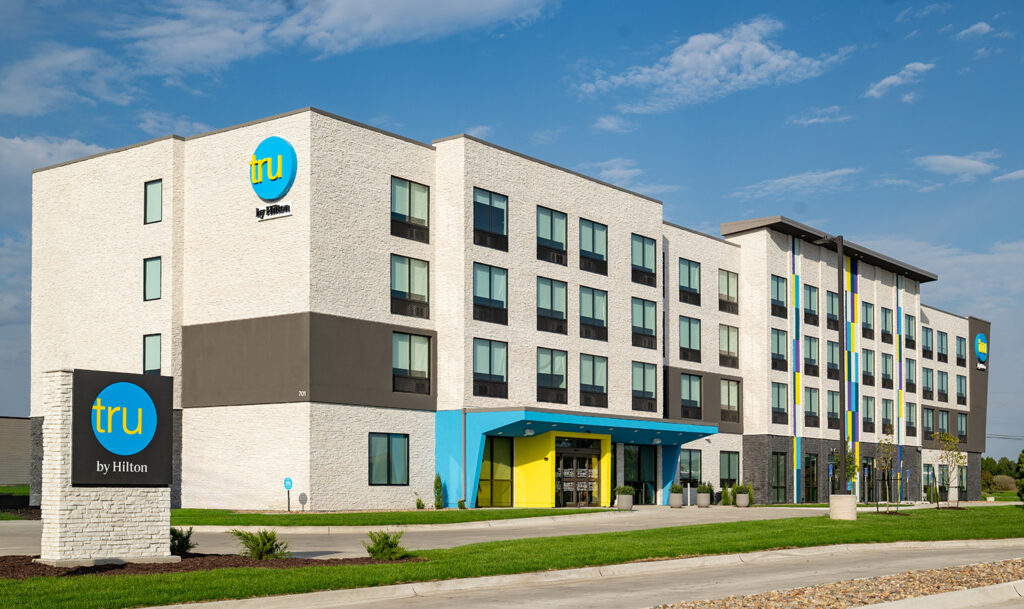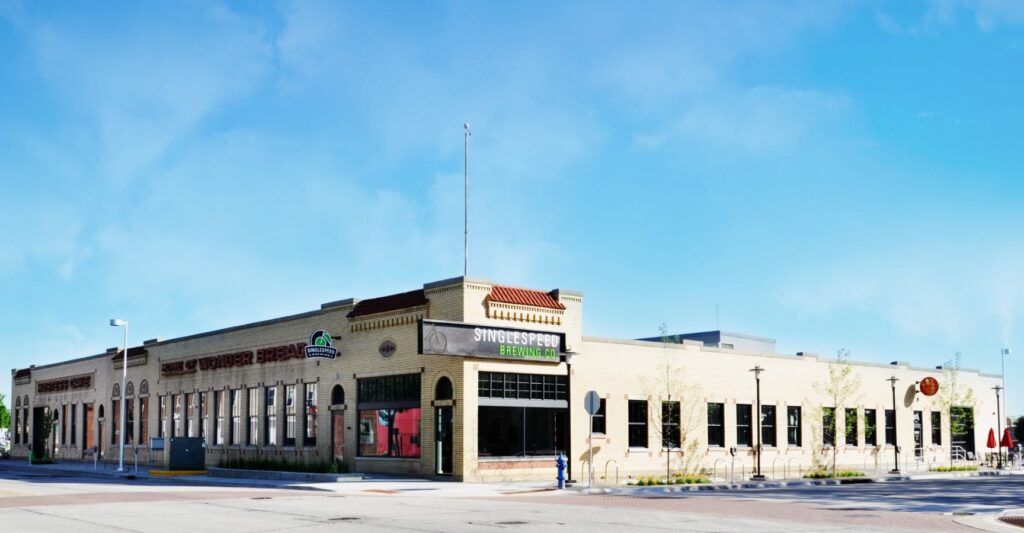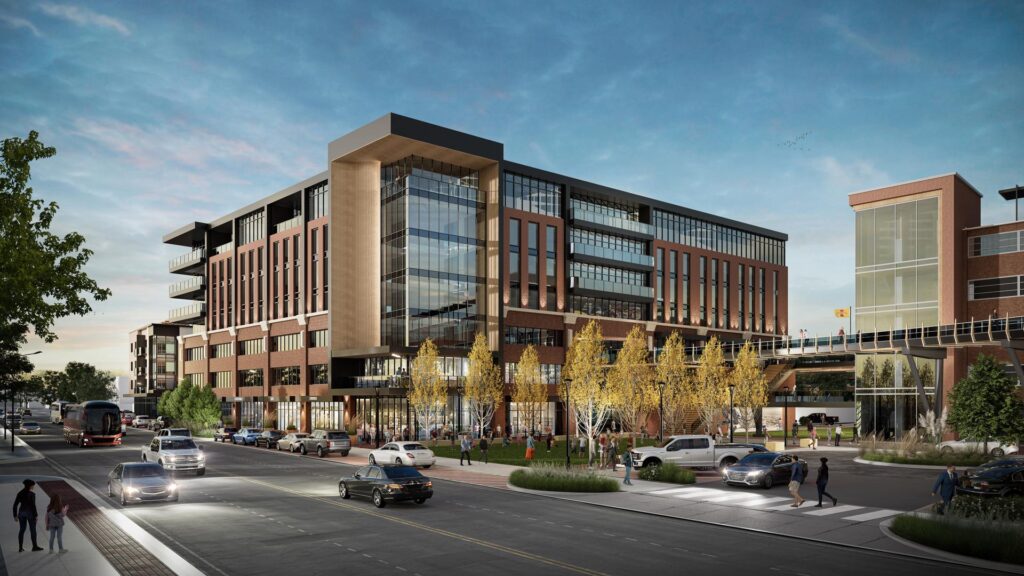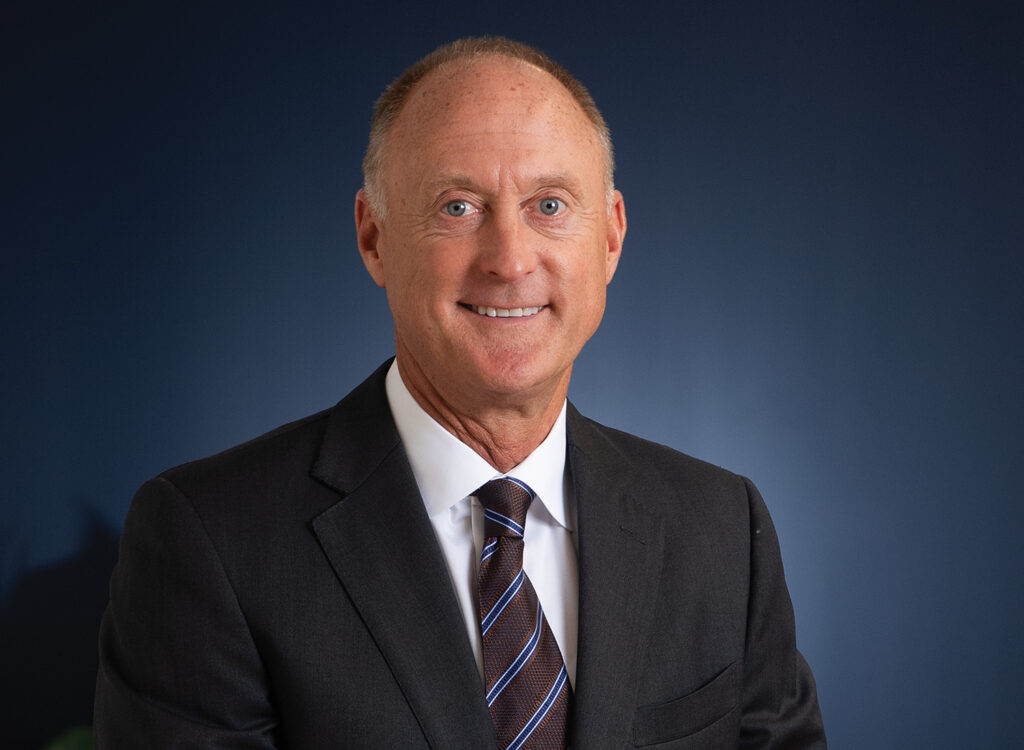Commercial property tax reform
The 2-year-old legislation has cities looking for new sources of revenues

KENT DARR May 22, 2015 | 11:00 am
13 min read time
3,158 wordsBusiness Record Insider, Real Estate and DevelopmentEditor’s note: West Des Moines will not hire new employees in the coming year and Des Moines is on a search for new revenues. Why? It’s all in reaction to property tax legislation that was passed in 2013, with a key provision taking effect this year that will hit municipal revenues next year. We decided to take a look at what the effect has been so far, and at the potential future effects on cities. The answers, as you might expect for an issue as complex and multifaceted as commercial property tax reform, are not uniform. West Des Moines and Des Moines both draw a large percentage of their revenues from commercial property taxes. And the reality is, it’s just too soon to know what the real effects will be of legislation that Gov. Terry Branstad declared two years ago would lead to the largest reduction in property tax bills in state history. But despite the uncertainty, and despite an underlying fear from city leaders that the state, as it has in the past, will leave promises unfulfilled, cities are preparing for a landscape that will continue to morph as the legislation takes effect.
Grounded
Property tax reform hasn’t been a city budgetbuster, but local officials are concerned
If you ever wonder whether land rules the roost in Iowa, just consider that property owners can tap into more than two dozen tax credits and exemptions, and those don’t include rollbacks and abatements and rebates that lower tax bills.
As further evidence that we are prone by policy to protect the land from tax grubbers, the Iowa Legislature, with Gov. Terry Branstad in agreement, passed what were hailed by many, depending on how much hyperbole they had ingested for the day, as the most significant property tax reforms in state history in 2013.
For municipalities, though, the reforms took an additional bite out of their principal source of revenues, with the first real effects showing up in budgets for the fiscal year that begins July 1.
At first glance, the impact appears slight, with the loss of some property tax revenues offset by something called “backfill,” a promised return of dollars lost to reform. Even for communities that have experienced an overall decline in property tax revenue, the backfill has added up to increases in revenues of 1 or 2 percent.
But what if the backfill goes away? And what happens when the state pledge caps out? It is doubtful that city expenses will freeze. And there are plenty of Statehouse observers who know legislators sometimes have short memories. They point to example after example of instances when appropriations suddenly lock in at $0.
So, who’s paying attention to what admittedly can be a dry and complicated issue?
Des Moines and West Des Moines, two cities that receive a large chunk of revenue from commercial property taxes, are expected to take the biggest hit from changes in the commercial property tax laws, especially from changes in the way apartment buildings are taxed. On the other hand, development colossus West Des Des Moines was able to lower its tax levy for the coming fiscal year by a nickel, and it put in place a hiring freeze.
There have been some key changes.
One the one hand, legislators decided that as a matter of tax fairness, the owners of office buildings, restaurants, retail shops and massive warehouses shouldn’t have to pay taxes on 100 percent of the value of their properties. Some also argued that lower taxes would trigger more commercial development. Developers and brokers say that has not occurred.
As of this year, commercial and industrial properties are taxed at 90 percent of value, a figure higher than what was sought by tax reformers.
The law also instituted a complicated formula for establishing a commercial property tax credit. The credits were expected to generate an average savings of $523 per property in 2014, the first year they went into effect. Once the credit is approved, it stays in place forever unless the property is sold or its use changes. For example, an office building converted to an apartment building would not qualify.
But lawmakers didn’t forget about owners of apartment buildings. Beginning with property assessments conducted in January, multifamily buildings will see their taxable value fall to the same level as single-family homes over eight years. This year, apartment owners will pay taxes on a little more than 86 percent of their properties’ value.
That change alone was enough for the city of West Des Moines to put a hiring freeze in place for the fiscal year that begins July 1.
West Des Moines City Manager Tom Hadden isn’t declaring an emergency. In fact, few city officials are panicking over the changes in property law. And for a simple reason: It is just too soon to know what the real effects will be.
Still, Hadden and Des Moines City Manager Scott Sanders recognize that their cities need to find additional revenues if they are to provide services residents expect.
Alan Kemp, executive director of the Iowa League of Cities, said city budget planners should be anticipating a rough ride.
For one thing, he is surprised that lawmakers seem willing to fund the backfill for fiscal 2016 (remember, a state budget has not been approved). He thought that with the state still locked in debate over school funding and with revenues relatively tight, the property tax rebate to cities would have been eliminated.
“The state has a bad record of maintaining obligations,” Kemp said.
Kemp and others know that what lawmakers give, they can take away. In fact, it is the Legislature, with interpretation by the courts, that determines how cities raise money. Even locally generated hotel/motel dollars are parceled out on a formula mandated by the state.
The local option sales tax, considered the best alternative to property taxes for generating local revenues, could be changed by pending law to distribute half of the proceeds to property tax relief.
The city of Des Moines would like to determine for itself how the money might be spent. In particular, City Manager Sanders would like to invest it in improvements to neighborhoods with the hope of boosting property values.
The city of West Des Moines supports sharing the revenue with property owners, apparently recognizing that the best way to win voter support for the 1 percent hike in sales taxes is to guarantee some property tax relief.
Des Moines has walked the fine line — some would say the razor’s edge — between taxes and fees as revenue generators for several years. It currently is holding $40 million in trust to pay a court-ordered settlement of a lawsuit that resulted in a judge’s ruling that what the city called a fee, this one for users of electricity, was in fact an illegal tax.
The Legislature came to the city’s rescue in 2009, and allowed Des Moines and any other city to assess a fee for the use of electricity and other utilities.
Lawmakers have mandated other expenses that cities can’t avoid. The state’s 49 largest cities pay into two pension funds, one for police and fire departments, the other for all other municipal workers. The police and fire pensions, called 411 funds, put steep requirements that many believe could ultimately lead to a public pension crisis, much like those that have forced some West Coast cities into bankruptcy.
For Gretchen Tegeler, executive director of the Taxpayers Association of Central Iowa, that crisis is practically unavoidable, but she doesn’t believe it can be solved by letting cities tap into unlimited revenue sources.
Tegeler is a tax expert and a respected advocate for fiscal discipline. Her arguments can be boiled down to this: Cities need to control expenses; give them more money and they will spend more money.
But City Manager Hadden has a reply to that.
“We’re not like the federal government. We have to spend within our means,” he said.
For the most part, that amounts to spending what revenues property taxes provide.
Elements of reform
Thirty years of debate led to HB 295
The property tax reform legislation was approved by the Iowa Legislature and signed into law by Gov. Terry Branstad in 2013. Some of its changes were immediate, some will be phased in over 10 years.
Rate of growth: Effective the day it was signed, allowable taxable growth statewide of residential and agricultural properties was lowered to 3 percent from 4 percent.
Commercial and industrial values: The taxable value of commercial and industrial properties was set at 95 percent of assessed value as of Jan. 1, 2013. The taxable value dropped to 90 percent as of Jan. 1, 2014.
Business credit: On Jan. 1, 2014, owners of commercial properties received a credit on the first $145,000 of assessed value that was estimated to equal the taxes paid on a residential property of equivalent value based on 2013 assessments. Once approved, that credit lives with the property, unless its use changes. The credit does not apply to multifamily properties, so if an office building were converted to apartments, the credit would not apply. This provision came with a bit of a surprise. When the bill passed, it was estimated that the credit would average $523 per property statewide. Instead, the average credit was $900 per property, an increase of nearly 70 percent.
Multifamily rollback: The rollback is the amount of assessed value that is taxable. Beginning this year, multifamily properties are treated as a separate class, with taxable value declining until it reaches the residential rollback in 2022. For 2015 assessments, which will be paid in 2016 and 2017, the taxable value of residential properties is about 55.2 percent; for commercial it is slightly more than 86 percent. Those rates are expected to be about 56.4 percent in 2022.
Local option an option
Weary of state promises, cities look to local option sales tax
Mandates concern local government leaders. So do half promises.
Just consider the problem Iowa lawmakers are having coming up with a funding formula for schools. The formula was a legislative promise, one that schools use to set their budgets. The debate over school funding has many city leaders worrying about the future of a so-called backfill of revenues lost to property tax reform.
West Des Moines City Manager Tom Hadden notes that what lawmakers give, they can take away or at least place a local price tag on it.
“The state’s biggest impact is by legislative action,” Hadden said. “Our ability to access funds is very limited.”
Here are a couple of examples of those actions:
The hotel/motel tax that cities collect is distributed in a manner mandated by state law. Cities typically see three-sevenths of the revenues from the tax, which is 7 cents on the dollar.
Even the much ballyhooed local option sales tax will have a stake anchored in the property tax landscape, providing lawmakers get a chance to vote on a bill that was introduced this year in the Iowa House Ways and Means Committee.
Rep. Tom Sands, chairman of the committee, is a longtime banker and fiscal conservative who keeps a close watch on taxes and revenues flowing to cities. He introduced a study bill in April that would allow cities with touching borders, such as those in Greater Des Moines, to ask voters to approve the tax. If approved, at least 50 percent of the revenues would have to be used to lower property taxes.
Sands said the property tax relief language is essential to garnering support from legislators in rural counties.
In West Des Moines, which has pressed for a change in state law that will allow cities whose borders touch to ask their residents whether to adopt a local option sales tax, city leaders seem to support the idea of using some of the extra revenue for property tax relief.
West Des Moines City Councilman Jim Sandager said that feature might be enough to get voters to support a local option sales tax.
In Des Moines, on the other hand, city officials would like the option of how to spend the option, said Councilwoman Christine Hensley.
It should be noted that current law does not require directing any portion of local option revenues to property tax relief.
How are cities coping and prepping?
Freeze hiring, find alternatives to property taxes
West Des Moines City Manager Tom Hadden has been on the job for a little more than a year. He arrived just in time to see the first impact of property tax reform.
Property valuations gained a mere 0.7 percent for the 2015 and 2016 fiscal years, based on 2014 valuations, meaning the full effect of property tax reform had yet to take hold. Property tax revenues available for city expenses gained 1.1 percent after increasing an average of 4 percent a year for several years.
The rollback in revenues from multifamily assessments will show up in the fiscal 2016 and 2017 budgets.
Hadden’s reaction: Freeze hiring.
His next thought: It would be great to ask voters to approve a local option sales tax to partially offset the dollars that could be lost over the next 10 years as the result of property tax reform.
Hadden estimates the city needs at least 3 percent revenue growth just to pay salaries, wages and benefits, such as mandated pension contributions.
“When they take away your revenue stream, it can be challenging,” he said.
And then there are basic services, like police and fire protection and good roads and streets, that residents consider important.
“People aren’t interested in hearing your excuses when they have an issue they want you to address,” he said.
And that, he believes, is what sets cities and their budgeting process apart from the sources of many of their required expenses. He points out that the city of West Des Moines, unlike the federal government, can’t float along on a deficit.
“Local government has to live within its means,” he said. “Yet the local level is where you have to provide the services.”
The percentages would tell you that West Des Moines and Des Moines will feel the brunt of changes to commercial property taxes.
In 2013, nearly 30 percent of property revenues in both cities came from commercial buildings, according to the Iowa Department of Management, well above the state average. Those numbers reflect revenue before apartment buildings began their rollback to residential numbers.
By comparison, a mere 5 percent of Waukee’s revenues were from commercial properties in 2013, while Ankeny accumulated 19 percent of its revenues from commercial properties.
Des Moines City Manager Scott Sanders said the property tax landscape is a “risk to the budget.” The city is counting on $5 million a year from the state to make up for the drop in commercial valuations to 90 percent from 100 percent.
He also points out that city budgets must be filed with the state by March 15, long before lawmakers have a state budget in hand. Cities really don’t know what they are getting from the state when they crunch their numbers.
The City Council understands that it needs to focus on improving property values in neighborhoods and finding new construction for vacant properties.
A 1 percent local option sales tax would provide the funds necessary for those improvements and move the budget burden away from property taxes, Sanders said.
“The local option sales tax is the one source of revenue that would be large enough to supplement property taxes,” he said. “We have considered other options, but they are not of the magnitude of the local option.”
Sanders also noted that when the Legislature passed property tax reform, lawmakers said they would address the need for alternative revenues in future sessions.
Rep. Tom Sands introduced a bill this year that set the framework for debate on the local option sales tax.
Some council members also have discussed tapping into the city’s large base of nonprofit organizations that do not pay property taxes. Those efforts have found little traction. Still, it is a topic that gets a lot of attention in Des Moines, where public utilities and hospitals make voluntary payments in lieu of taxes.
“The public realizes that the tax burden is spread more thinly when you have large tax-exempt entities,” Sanders said.
What does the future hold for cities?
A watchdog believes cities will get by just fine
Gretchen Tegeler asks lots of questions about taxes, based on reams of data she compiles from state and federal officials as the executive director (and frequently the sole employee) of the Taxpayers Association of Central Iowa. She is a frequent contributor to the Business Record, and the topic more often than not deals with public finances.
After years of experience, she still is surprised by novel nuggets of information. For example, much was made two years ago when the Iowa Legislature, as a part of what lawmakers called landmark property tax reform, cut the maximum statewide growth in valuation to 3 percent from 4 percent.
Tegeler, as many of us, assumed that the 3 percent — or 4 percent, for that matter — was a target. If assessments only went up 2 percent, let’s pretend, then that would be the statewide average for the year.
Wrong, wrong, wrong, Tegeler said. She recently discovered that the statewide average increase is a target with a can’t-miss bull’s-eye. The statewide average will increase 3 percent no matter what.
“I was as surprised as anyone when I learned that,” she said.
But what that discovery points to is a broader belief that where there’s a will to raise revenues, there are many ways.
“They will always find a way,” Tegeler said.
She is not being hostile toward local governments.
Tegeler recognizes that expenses that must be paid, and many of those are mandated by the state.
Still, she does not have a sense of impending doom for city budgets based on changes in the property tax law.
After looking at the data, she predicts that Des Moines will lose about 3 percent in taxable valuation over the 10 years it will take for multifamily properties to be taxed the same as residential. West Des Moines will experience a decline of about 3.5 percent, just on its land in Polk County, where most of the city’s apartments are located.
Tegeler predicts that Ankeny will lose about 2 percent in commercial property tax revenue over 10 years and Urbandale will lose about 1.4 percent.
“I don’t think Ankeny and Urbandale will even notice it,” she said.
The loss of taxable valuation in West Des Moines will more than likely be offset by the city’s rapid development, Tegeler said.
“Des Moines will notice it — but it’s still pretty small in the scheme of things,” she said. “Consider this year their taxable value grew 2.4 percent, so if this had been in place it would have grown 2.1 percent instead.”











